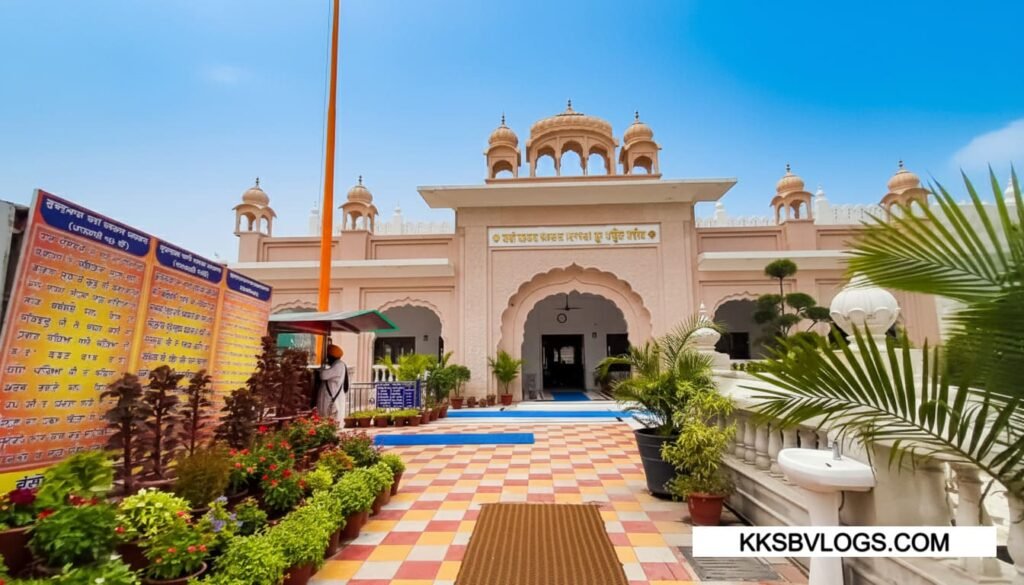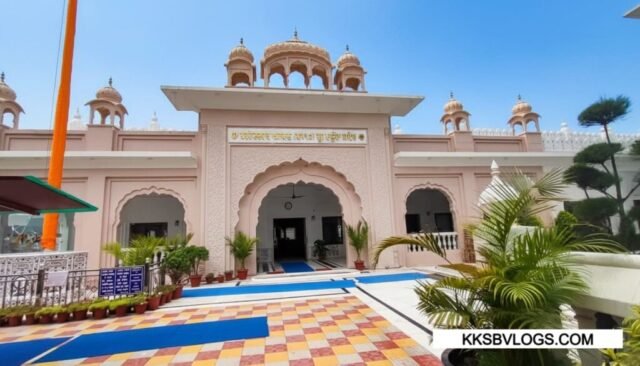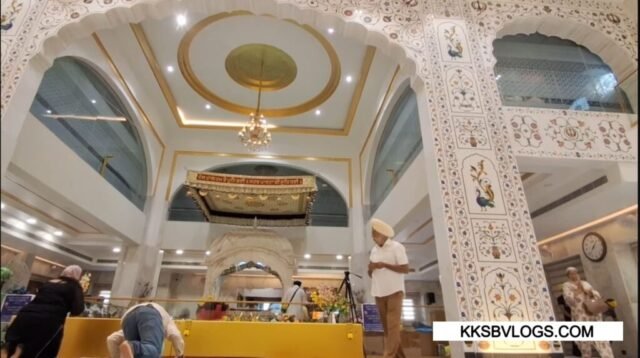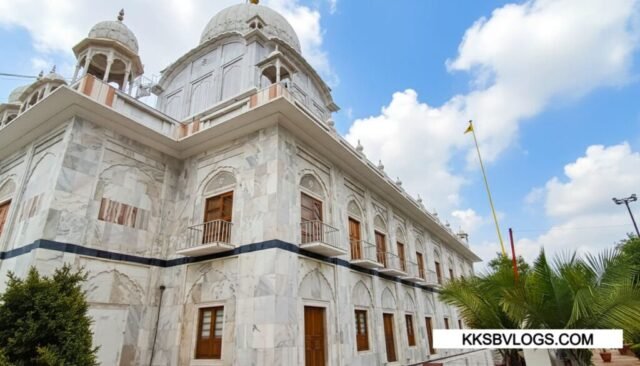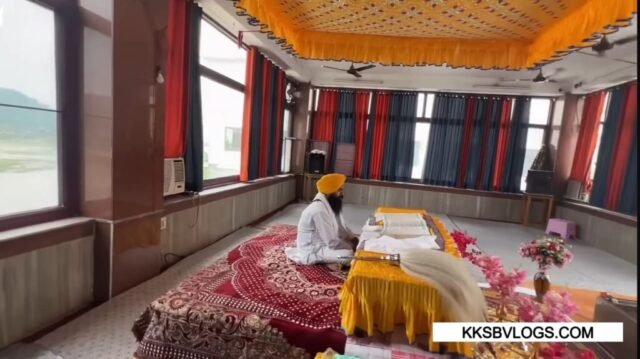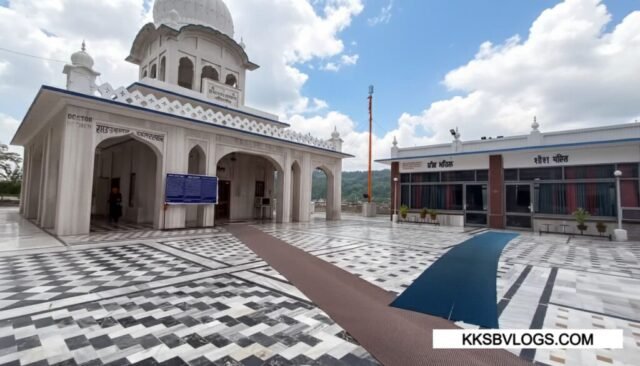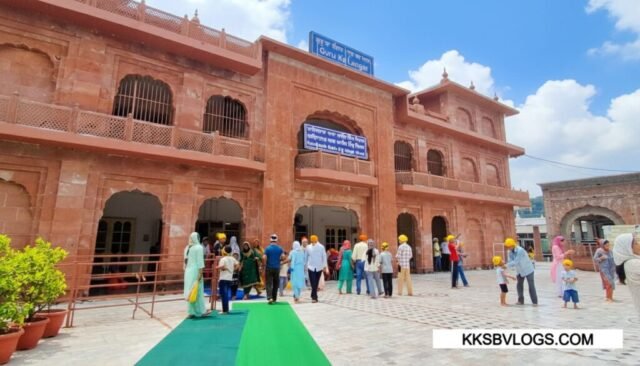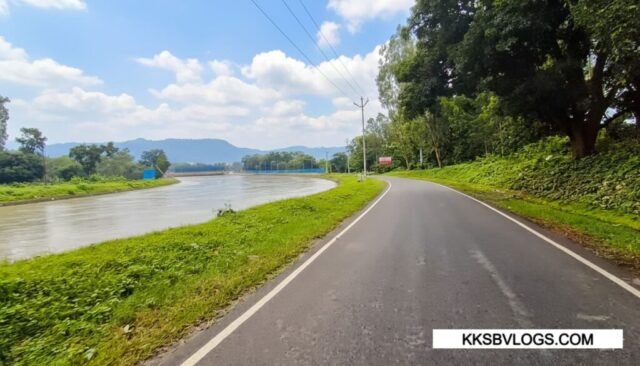1) Introduction
On the banks of the Yamuna River in Sirmaur district of Himachal Pradesh, Gurdwara Paonta Sahib is a priceless spiritual gem of Sikh history. About 130 km from Chandigarh and only 48 km from Dehradun, this gurdwara is not only a pilgrimage spot but also a place where Guru Gobind Singh Ji spent the most important years of his life.
The very name Paonta Sahib shows its history: “Paon-ta” means to settle one’s feet—that sacred place where Guru Ji first placed his feet and promised to stay for a long time.
When you arrive here, you will not only find the deep spiritual peace of Sikh tradition, but also a rare combination of the emerald-green flow of the Yamuna River, the forested Shivalik Hills, and beautiful heritage architecture.
Whether you are a Sikh devotee, a history enthusiast, or a traveller searching for offbeat spiritual journeys in Himachal, Gurdwara Paonta Sahib is a must-visit destination.
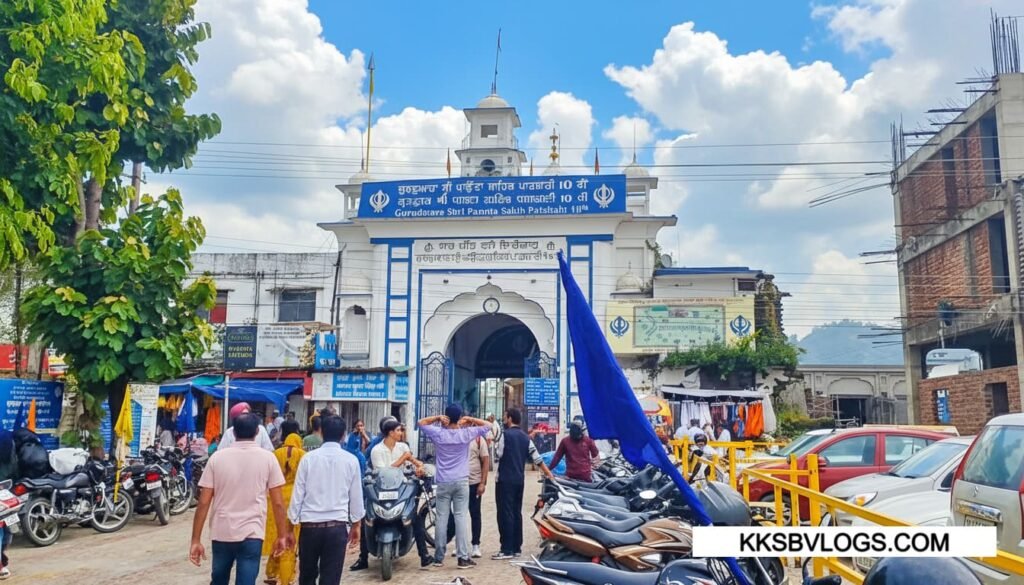
2. History & Legends of Gurdwara Paonta Sahib
The story of Paonta Sahib is a golden chapter in Sikh history.
Guru Gobind Singh Ji, the tenth Sikh Guru, spent 4.5 creative and decisive years (1685–1690) here.
2.1 Guru Gobind Singh Ji’s Arrival
According to history, Guru Gobind Singh Ji came here from Anandpur Sahib on the invitation of Raja Medini Prakash of Nahan.
The Raja requested Guru Ji to settle here. Guru Ji chose a beautiful spot on the banks of the Yamuna River where he placed his feet for the first time and decided to stay.
This is how the place was named Paonta Sahib—meaning where the Guru set his feet.
2.2 Literary & Spiritual Achievements
While staying at Paonta Sahib, Guru Gobind Singh Ji wrote many parts of the Dasam Granth, including Jaap Sahib, Akal Ustat, and Chandi di Var.
Here he also organized a Kavi Darbar where poets from different parts of the country came to write spiritual and martial poetry.
Because of this, Paonta Sahib is also called the literary capital of Sikhism.
2.3 Battles & Khalsa Spirit
Here, Guru Gobind Singh Ji organized his Khalsa army and inspired the Sikh community with a martial spirit.
Around 1689, he fought the Battle of Bhangani, which is considered a crucial battle in Sikh history.
The gurdwara of Paonta Sahib stands as a symbol of that heroic era, where spirituality and warrior discipline grew together.
2.4 Sacred Relics & Legacy
The gurdwara still preserves original weapons (swords, spears), dastaar, and written bani of Guru Ji.
These relics give every visitor a direct connection to the great time when Guru Gobind Singh Ji strengthened the foundation of the Sikh faith.
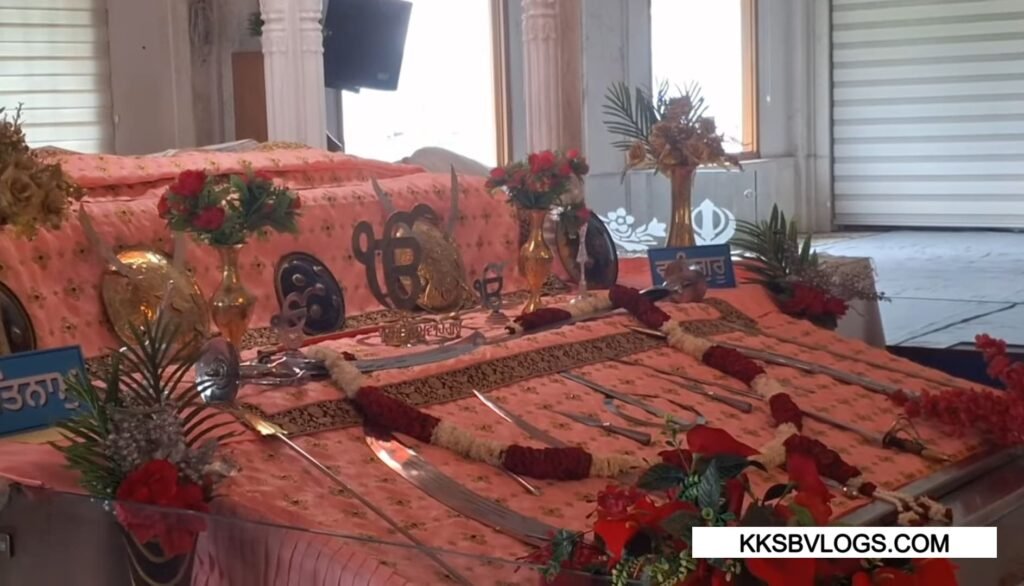
3. Architecture & Spiritual Significance
Gurdwara Paonta Sahib is a beautiful example of traditional Sikh architecture—with white marble flooring, golden domes, and a perfect riverfront setting on the Yamuna.
3.1 Main Darbar Sahib
The heart of the gurdwara is the Main Darbar Hall, where Sri Guru Granth Sahib Ji is installed.
Inside, you will see intricate marble inlay work, colourful glass panels, and a gold-plated canopy that remind you of Anandpur Sahib and Harmandir Sahib (Golden Temple).
The daily Asa-di-var kirtan and evening Sukhasan ceremony fill the entire campus with soothing spiritual energy.
3.2 Yamuna Riverfront & Takhat
On the side of the Darbar is the Takhat Sahib, where Guru Gobind Singh Ji held Kavi Darbars and wrote his bani.
Even today, devotees sit here in meditation, watching the calm flow of the Yamuna River to bring peace to the mind.
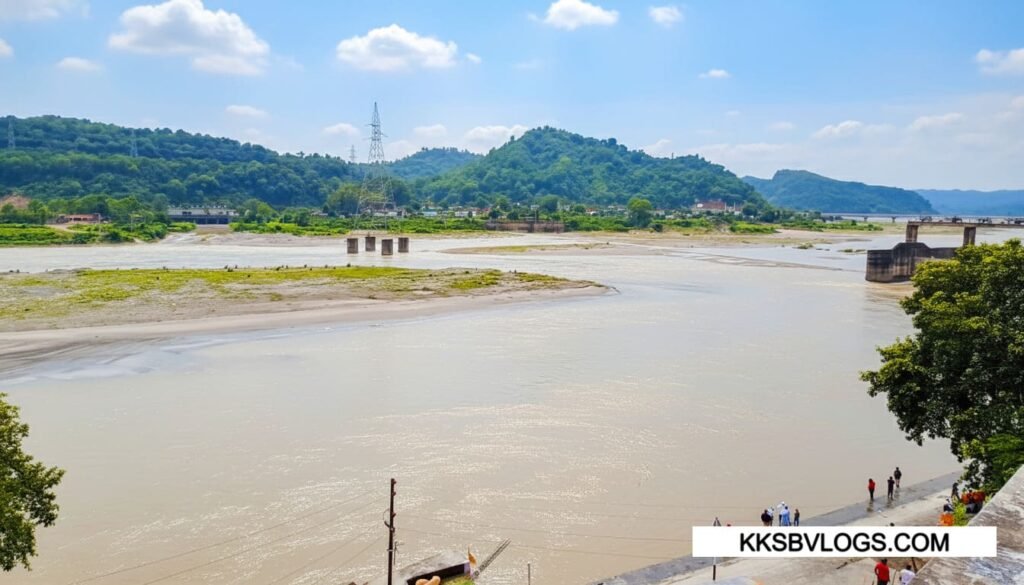
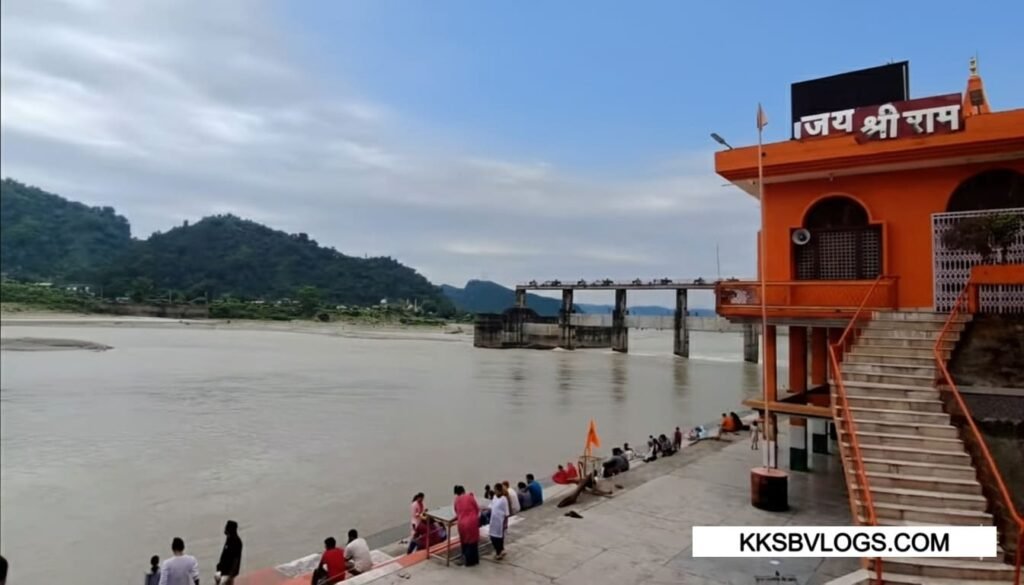
3.3 Sacred Museum & Relic Rooms
Inside the complex is a heritage museum where Guru Gobind Singh Ji’s original weapons, hukamnamas, and handwritten manuscripts are preserved.
This is a living history gallery that gives visitors a real glimpse into the life of the 17th-century Sikh warrior-poet.
3.4 Spiritual Significance
Paonta Sahib is known as a literary, martial, and spiritual capital.
Here Guru Ji strengthened the two pillars of Sikhism—Shakti (martial power) and Bhakti (devotion).
Devotees believe that offering ardaas here brings courage, mental clarity, and creative inspiration.
4. Things to See & Do at Gurdwara Paonta Sahib
Paonta Sahib is not just a spiritual gurdwara visit but a complete experience of Sikh history, nature, and culture.
Here’s everything you can explore:
4.1 Main Darbar Sahib & Ardaas
The most sacred space is the Main Darbar Hall, where Sri Guru Granth Sahib Ji is placed.
In the early morning Asa-di-var kirtan, the soft sound of shabad gurbani and the beat of nagara fill the entire complex with peace.
Visitors take part in daily ardaas, which gives mental peace and spiritual clarity.
In the evening Sukhasan ceremony, Guru Granth Sahib Ji is respectfully taken to the resting place—watching this is a heart-touching experience.
4.2 Museum & Guru’s Relics
In the heritage museum of the gurdwara, you can see Guru Gobind Singh Ji’s original weapons (swords, spears, bow & arrows), dastaar, and handwritten bani.
Here you will also find rare manuscripts of the Dasam Granth and historical hukamnamas.
Photography is not allowed, but for spiritual history lovers, this darshan is truly unforgettable.
4.3 Yamuna Ghats & Takhat Sahib
On the side of the Darbar is Takhat Sahib, where Guru Gobind Singh Ji composed poetry and held Kavi Darbars.
Sitting here and watching the slow emerald flow of the Yamuna River while meditating brings a unique peace.
Devotees also carry holy water from here, which is considered pure and sacred.
4.4 Langar Hall & Community Service
Every day, the Guru ka Langar runs where everyone—regardless of religion or caste—sits together and eats a free meal.
Volunteering (seva), such as serving prasad, helping in the kitchen, or washing utensils, provides a deep sense of spiritual satisfaction.
This is the best way to experience the Sikh principles of equality and community service.
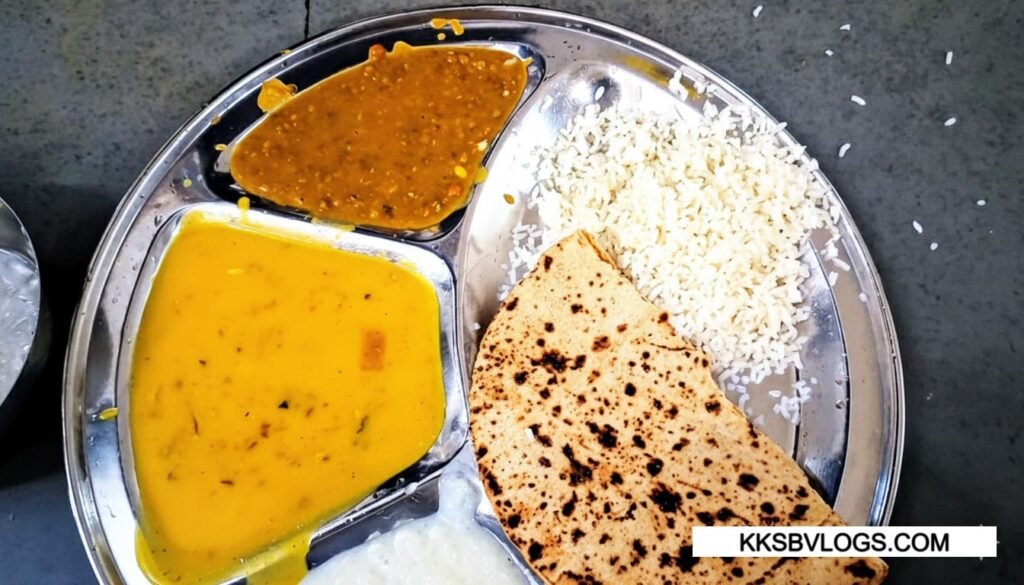
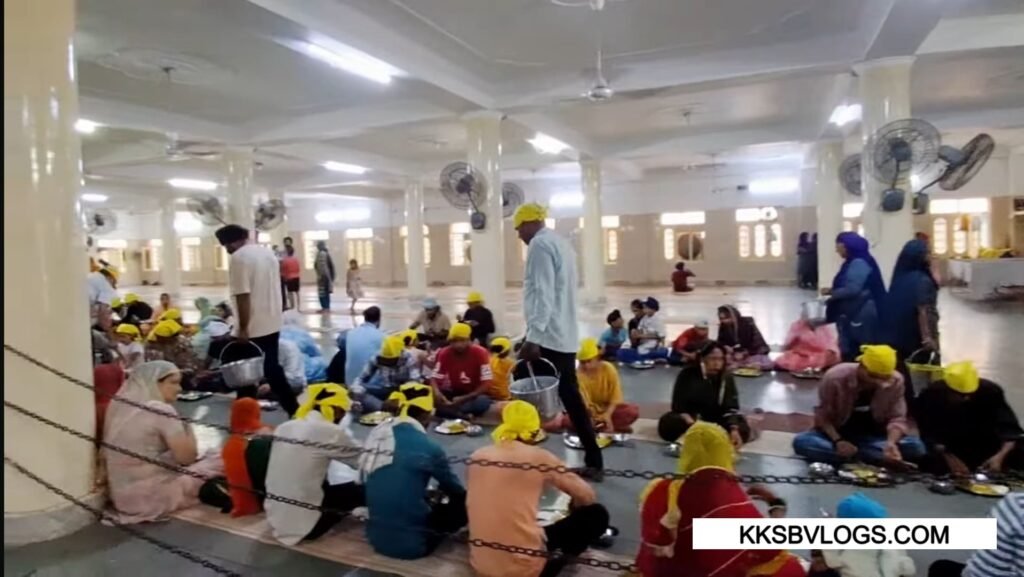
4.5 River Walk & Evening Aarti View
In the evening, walking along the Yamuna riverside while watching sunset reflections and capturing the last golden rays on the gurdwara’s dome is an added bonus for photographers. 📸
5. Festivals & Celebrations at Paonta Sahib
Paonta Sahib remains lively throughout the year, but some festivals make the gurdwara’s spiritual glory even brighter. ✨
5.1 Guru Gobind Singh Gurpurab
The grandest celebration here is Guru Gobind Singh Ji’s Gurpurab (December/January).
The entire campus is decorated with flowers and lights.
Special Akhand Path, shabad kirtan, and nagar kirtan (procession) take place.
Thousands of devotees come from Himachal, Punjab, Haryana, and Uttarakhand.
5.2 Baisakhi
The Baisakhi festival, celebrated in April, marks both the harvest season and the birth of the Khalsa Panth.
The gurdwara courtyard comes alive with folk music, Gatka martial arts, and special langar.
Visitors witness a colourful blend of Himachali and Sikh culture.
5.3 Shaheedi Divas & Other Gurpurabs
On the Shaheedi Divas of Guru Arjan Dev Ji and Guru Tegh Bahadur Ji, special ardaas is offered.
Throughout the year, the gurdwara is beautifully illuminated for Prakash Utsav (Guru Granth Sahib installation anniversary) and Diwali.
💡 Visitor Tip during Festivals
During festival time, crowds are large, so early morning darshan is best.
It is helpful to book stay and parking in advance.
6. How to Reach Gurdwara Paonta Sahib
Paonta Sahib in Himachal Pradesh has excellent road connectivity, making it easily accessible for travellers.
6.1 By Road – Most Convenient
- From Dehradun: approx 48 km / 1.5 hrs (via Herbertpur)
- From Chandigarh: approx 130 km / 3 hrs (via Nahan or Kala Amb)
- From Shimla: approx 175 km / 6 hrs
- From Delhi: approx 270 km / 6–7 hrs (via Karnal & Yamunanagar)
Regular HRTC and private buses run directly from Dehradun, Chandigarh, and Delhi to Paonta Sahib.
6.2 By Train
The nearest major railway stations are Dehradun (48 km) and Yamunanagar–Jagadhri (60 km).
From these stations, taxis and direct buses are easily available.
6.3 By Air
The nearest airport is Jolly Grant Airport, Dehradun (about 72 km).
Chandigarh Airport (approx 130 km) is another good option.
From both airports, taxis and Volvo buses are easily available.
6.4 Local Transport
The gurdwara campus and Yamuna ghats are easily walkable.
Within the town, auto-rickshaws and e-rickshaws are available for short distances.
🚩 Quick Travel Tips
- Morning 5–10 am is the most peaceful time for darshan.
- During monsoon, be careful on landslide-prone patches while driving.
- Festival days mean heavy traffic, so early arrival and pre-booked parking are helpful.
7. Best Time to Visit Gurdwara Paonta Sahib
Paonta Sahib, Himachal Pradesh can be visited all year round, but every season has its own unique flavour. 🌤️
- March – June (Summer): Weather remains pleasant at 18–30 °C.
Clear skies and the turquoise flow of the Yamuna River make it ideal for photography. 📸 - July – September (Monsoon): Forests become lush green and the Yamuna valley looks mystical with clouds.
Drive carefully as roads may be slippery. - October – November (Autumn): Pleasant weather around 15–25 °C with a festive mood.
After Baisakhi, preparations for Gurpurab also begin during this time. - December – January (Winter): Cold mornings (8–20 °C).
The grand Gurpurab of Guru Gobind Singh Ji is celebrated in this season.
💡 Pro Tip
Early morning (5–9 am) is the most peaceful time for darshan.
Visiting during festivals such as Gurpurab, Baisakhi, and Shaheedi Divas enhances both the spiritual and cultural experience.
8. Visitor Information in Gurdwara Paonta Sahib
Gurdwara Paonta Sahib is well-organised and traveller-friendly, offering complete spiritual comfort.
- Timings: Darshan from 4:00 am to 10:00 pm.
Langar is served from morning until late evening. - Entry Fee: Free (donations are voluntary).
- Facilities:
- Large parking area for cars & buses
- Clean washrooms & drinking water
- Spacious langar hall and free stay in Sarai (guest house) for pilgrims
- Museum displaying Guru Gobind Singh Ji’s weapons & handwritten bani
- Dress Code: Cover your head (scarf or dupatta mandatory).
Modest and comfortable clothing is recommended. - Average Time Required: About 2–3 hours for darshan, museum visit, riverfront walk, and langar.
- Safety & Etiquette:
- Remove shoes before entering the Darbar Sahib.
- Photography is only allowed where specified; inside the sanctum, photography is strictly prohibited.
- Maintain silence and respect during kirtan.
9. Our Experience – Gurdwara Paonta Sahib
Our trip to Gurdwara Paonta Sahib in Sirmaur, Himachal Pradesh was a soulful blend of history, devotion, and natural beauty.
Early in the morning, we drove from Dehradun, and as soon as we caught the first glimpse of the Yamuna River, a deep calmness entered our hearts.
The roadside deodar trees and cool breeze made the journey even fresher.
Upon entering the gurdwara gate, the soft sound of shabad kirtan and the aroma of langar’s roti–dal gave us a divine welcome.
Sitting inside the Main Darbar Hall before Guru Granth Sahib Ji and offering ardaas brought immense peace to the heart.
The cool marble floor and morning light filtering through the golden dome created a truly celestial ambience.
We then visited Takhat Sahib, where Guru Gobind Singh Ji composed poetry and parts of the Dasam Granth.
Sitting beside the Yamuna River, listening to the gentle gurgling of the water while meditating, became a life-long memory.
The museum’s display of Guru Ji’s original weapons, hukamnama, and handwritten bani made history feel alive.
Afterward, having Guru ka Langar prasad—hot dal, roti, and kheer—was more than a meal; it was a powerful experience of spiritual equality.
Participating in seva by washing utensils was equally heart-touching.
By evening, as the sunset’s golden hue fell on the gurdwara’s white marble and reflected over the Yamuna, a serene calmness enveloped the entire complex.
This moment became the most soulful part of our trip—a rare blend of nature, shabad, and spiritual energy that only Paonta Sahib can offer.
10. Nearby Attractions Gurdwara Paonta Sahib
After visiting Paonta Sahib, you can easily include nearby beautiful and culturally rich destinations to make your trip even more memorable.
1. Renuka Ji Lake & Temple (approx 55 km)
The jewel of Sirmaur district, Renuka Lake is dedicated to Maa Renuka.
Its 2.5 km parikrama path, lotus blooms, and annual Renuka Ji Fair create a peaceful spiritual and scenic experience.
2. Nahan Heritage Town (approx 45km)
A clean and heritage-rich hill town featuring Rani Tal garden, colonial-era churches, and a vibrant local market.
Evening walks and sampling Himachali street food are must-do activities.
3. Assan Barrage (approx 10 km)
At the confluence of the Yamuna and Asan rivers, this bird sanctuary is a paradise for birdwatchers.
In winter, migratory birds like red-crested pochard, pintail ducks, and bar-headed geese arrive here.
Ideal for photography and boating—a perfect half-day trip.
4. Kalesar National Park (approx 18 km)
Located on the Haryana border, Kalesar Wildlife Sanctuary is known for dense Sal forests and wildlife such as leopards and elephants.
Perfect for nature treks and jungle safaris.
5. Dehradun City (approx 48 km)
The nearby capital of Uttarakhand offers cafes, heritage schools, the Mindrolling Monastery, and the famous Paltan Bazaar for shopping.
It can be easily combined with a Paonta Sahib trip.
💡 Travel Tip
Combine Renuka Ji or Assan Barrage with the Paonta Sahib visit in the same day.
For Kalesar or Nahan, keep half a day, and for Dehradun, plan a full-day trip.
Gurdwara Paonta Sahib Location, Photos & Video
YouTube Video:Coming soon on – KKSB Vlogs
Instagram Updates: Stay connected with us for reels and updates– @official_kksb
Gurdwara Paonta Sahib Photos
Gurdwara Paonta Sahib Location
FAQs about Gurdwara Paonta Sahib
Where is Gurdwara Paonta Sahib located?
It is on the banks of the Yamuna River in Sirmaur district, Himachal Pradesh, about 45 km from Dehradun and 120 km from Chandigarh, directly connected by NH-7.
Which Guru is associated with Paonta Sahib?
This sacred site is linked to Guru Gobind Singh Ji, who lived here from 1685–1690, wrote parts of the Dasam Granth, and organized the Khalsa army.
How to reach Paonta Sahib?
Travel by road is easiest, with regular buses and taxis from Dehradun, Chandigarh, and Delhi. Nearest railhead is Dehradun (45 km) and the closest airport is Jolly Grant (70 km).
Best time to visit Gurdwara Paonta Sahib?
The best time is March–June for pleasant weather and December–January for the grand Guru Gobind Singh Ji Gurpurab celebrations. Monsoon (July–September) is beautiful but requires careful driving.
Are there entry charges at Paonta Sahib?
No. Darshan and Guru ka Langar are free of cost. Visitors may give voluntary donations to support the Paonta Sahib Gurdwara Himachal Pradesh sewa.
What are the main attractions inside Gurdwara Paonta Sahib?
Highlights include the Main Darbar Sahib, Takhat Sahib, the heritage museum with Guru Gobind Singh Ji’s original weapons and manuscripts, the Yamuna riverfront, and the daily Guru ka Langar.
Is Paonta Sahib suitable for family and elderly visitors?
Yes. The gurdwara has flat marble pathways, free Sarai accommodation, clean washrooms, and a peaceful environment—ideal for family trips and senior devotees.
Which nearby places to visit from Gurdwara Paonta Sahib?
Top nearby attractions include Assan Barrage Bird Sanctuary, Renuka Ji Lake & Temple, Nahan Heritage Town, Kalesar National Park, and Dehradun City for culture, wildlife, and sightseeing.

